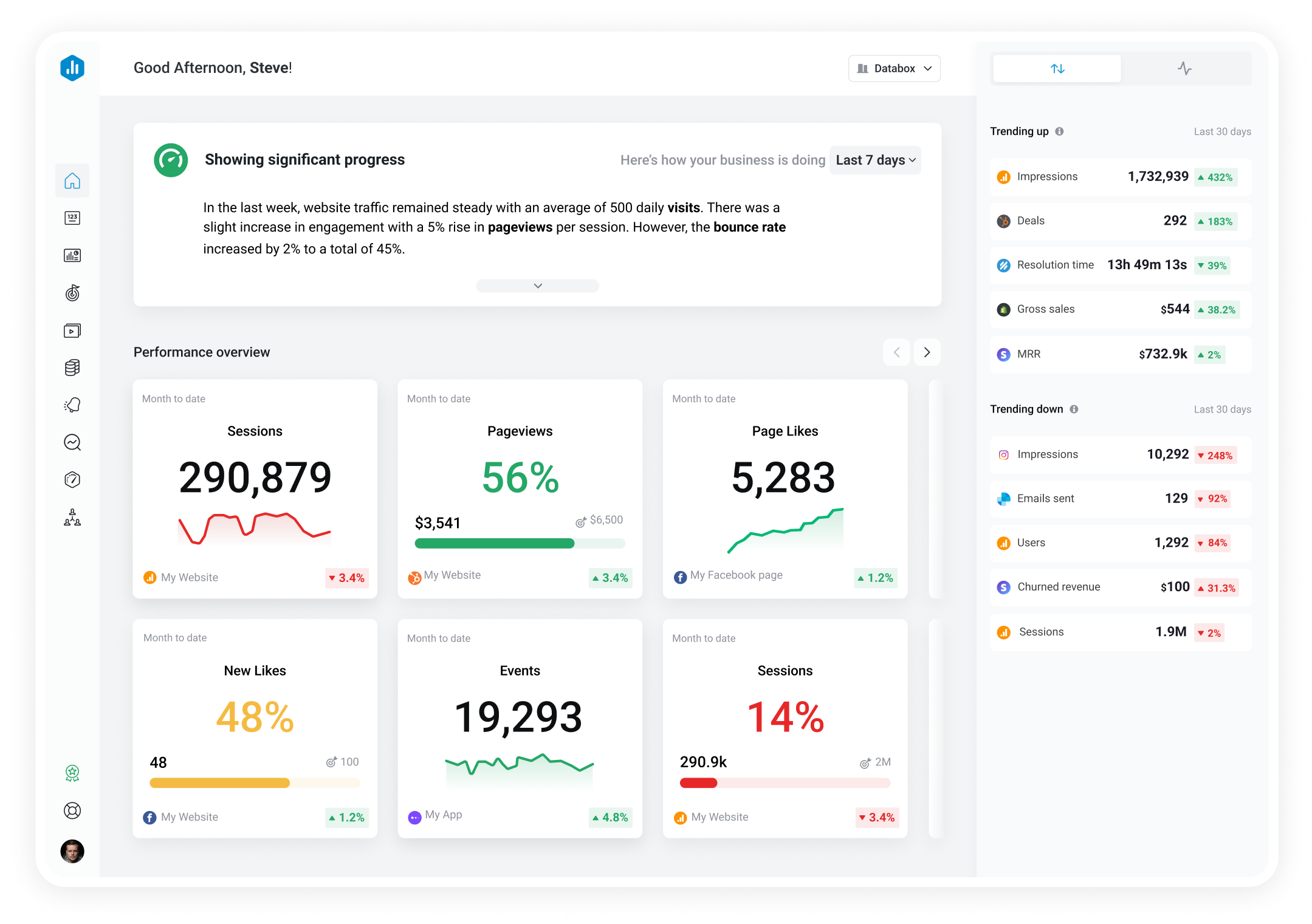Track all of your key business metrics from one screen
GET STARTED
 Xero
Net Profit
Xero
Net Profit Net profit is the amount of revenue a business earns after deducting all expenses, including taxes and interest. It reflects a company's overall profitability and is a key measure of financial success.
With Databox you can track all your metrics from various data sources in one place.
Net profit is the amount of money a company earns after deducting all expenses, taxes, and other costs from its total revenue. It represents the final profit generated from the business’s core operation.
It’s also often referred to as net income, bottom line, and net earnings, but the terms could have some slight differences based on their income statement positioning.
To calculate net profit, you need to subtract the total expenses from the total revenue.
The formula is simple:
Net Profit = Total Revenue – Total Expenses
The total expenses include all costs incurred by the business, such as the cost of goods sold, operating expenses, interest expenses, depreciation expenses, taxes, and any other relevant expenses.
For example, let’s say a company saw these numbers in a specific time period:
Using the formula above, we find that the company’s net profit amounts to $155,000.
It’s important to note that the specific breakdown of expenses may vary depending on the nature of the business and the accounting practices it follows.
Factors such as market conditions, company size, industry, operational efficiency, and competitive landscape all impact the net profit margin of a business, which means there’s no one-size-fits-all benchmark.
That said, we found that a good general net profit margin percentage is around 10%, according to data from Xero Benchmarks for All Companies.
But depending on the industry, even this number can vary drastically.
For example, net profit margins in the retail sector can range from 2% to 10%, depending on the type of retail business. Discount retailers typically have lower net profit margins, while specialty retailers or luxury brands may have higher margins.In the healthcare sector, margins vary on the specific segment, such as pharmaceuticals, hospitals, or medical devices, but they typically range from 5% to 15%.
The highest net profit margins are usually seen in the technology and software sector, where established businesses can achieve 30% or higher margins.
Net profit represents a company’s bottom line, and increasing it should be a number one priority in most modern organizations.
Depending on your size, business model, and industry, you’ll need to experiment with different approaches and strategies until you find the one that works best for your organization.
That said, we pinpointed a few expert strategies that might help you out:
More resources to help you improve:

Used to show a simple Metric or to draw attention to one key number.

Used to illustrate numerical proportions through the size of the slices.

Used to show comparisons between values.
Databox is a business analytics software that allows you to track and visualize your most important metrics from any data source in one centralized platform.
To track Net Profit using Databox, follow these steps:
 Goals
Goals Scorecards
Scorecards Metric Digest
Metric Digest Metric Builder
Metric Builder Data Calculations
Data Calculations Performance Screen
Performance ScreenThe Xero Profit & Loss (P&L) Overview dashboard provides a detailed view of income, expenses, gross profit, and net profit trends. It includes net profit breakdowns by type and visual comparisons of revenue vs. expenses over time.

This report gives a snapshot of financial results using Xero data on income, expenses, cash flow, balance sheet, and overall financials, supporting informed financial decisions.

Net profit is the amount of money a company has after subtracting all expenses from total revenue, including taxes, interest, and operating costs. It’s the actual profit the company has earned.
Gross profit, on the other hand, is the profit remaining after subtracting only the cost of goods sold from the revenue.
Net profit tells you how much actual profit a business generates, after accounting for all expenses and taxes. It’s an indicator of how efficient the company is at managing its costs and generating revenue, and it serves as a key measure of profitability.
